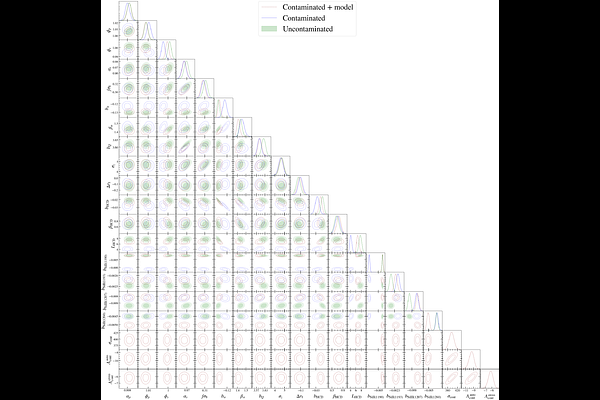Modelling the impact of quasar redshift errors on the full-shape analysis of correlations in the Lyman-$α$ forest

Modelling the impact of quasar redshift errors on the full-shape analysis of correlations in the Lyman-$α$ forest
Calum Gordon, Andrei Cuceu, Andreu Font-Ribera, Hiram K. Herrera-Alcantar, Jessica Nicole Aguilar, Steven Ahlen, Davide Bianchi, David Brooks, Todd Claybaugh, Shaun Cole, Axel de la Macorra, Biprateep Dey, Peter Doel, Jaime E. Forero-Romero, Enrique Gaztañaga, Satya Gontcho A Gontcho, Gaston Gutierrez, Julien Guy, Klaus Honscheid, Mustapha Ishak, Robert Kehoe, David Kirkby, Theodore Kisner, Anthony Kremin, Martin Landriau, Laurent Le Guillou, Michael Levi, Marc Manera, Paul Martini, Ramon Miquel, John Moustakas, Seshadri Nadathur, Gustavo Niz, Nathalie Palanque-Delabrouille, Will Percival, Francisco Prada, Ignasi Pérez-Ràfols, Graziano Rossi, Eusebio Sanchez, David Schlegel, Michael Schubnell, Hee-Jong Seo, Joseph Harry Silber, David Sprayberry, Gregory Tarlé, Benjamin Alan Weaver, Rongpu Zhou, Hu Zou
AbstractIn preparation for the first cosmological measurements from the full-shape of the Lyman-$\alpha$ (Ly$\alpha$) forest from DESI, we must carefully model all relevant systematics that might bias our analysis. It was shown in Youles et al. (2022) that random quasar redshift errors produce a smoothing effect on the mean quasar continuum in the Ly$\alpha$ forest region. This in turn gives rise to spurious features in the Ly$\alpha$ auto-correlation, and its cross-correlation with quasars. Using synthetic data sets based on the DESI survey, we confirm that the impact on BAO measurements is small, but that a bias is introduced to parameters which depend on the full-shape of our correlations. We combine a model of this contamination in the cross-correlation (Youles et al. 2022) with a new model we introduce here for the auto-correlation. These are parametrised by 3 parameters, which when included in a joint fit to both correlation functions, successfully eliminate any impact of redshift errors on our full-shape constraints. We also present a strategy for removing this contamination from real data, by removing $\sim$0.3% of correlating pairs.